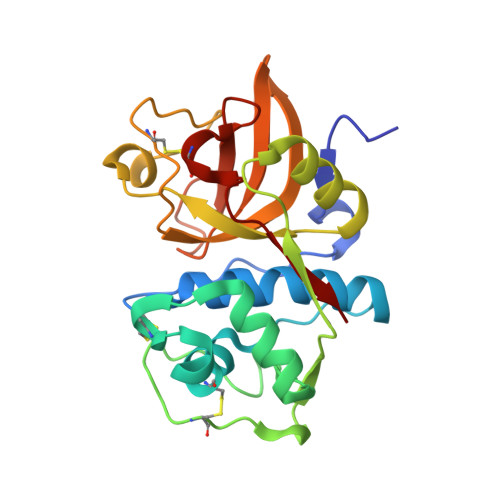Identification of selective, nonpeptidic nitrile inhibitors of cathepsin s using the substrate activity screening method.
Patterson, A.W., Wood, W.J., Hornsby, M., Lesley, S., Spraggon, G., Ellman, J.A.(2006) J Med Chem 49: 6298-6307
- PubMed: 17034136
- DOI: https://doi.org/10.1021/jm060701s
- Primary Citation of Related Structures:
2H7J, 2HXZ - PubMed Abstract:
The substrate activity screening method, a substrate-based fragment identification and optimization method for the development of enzyme inhibitors, was previously applied to cathepsin S to obtain low nanomolar 1,4-disubstituted-1,2,3-triazole-based aldehyde inhibitors (Wood, W. J. L.; Patterson, A. W.; Tsuruoka, H.; Jain, R. K.; Ellman, J. A. J. Am. Chem. Soc. 2005, 127, 15521-15527). Replacement of the metabolically labile aldehyde pharmacophore with the nitrile pharmacophore provided inhibitors with moderate potency for cathepsin S. The inhibitors showed good selectivity over cathepsins B and L but no selectivity over cathepsin K. X-ray structures of two crystal forms (1.5 and 1.9 A) of a complex between cathepsin S and a triazole inhibitor incorporating a chloromethyl ketone pharmacophore guided the design of triazole substrates with increased cleavage efficiency and selectivity for cathepsin S over cathepsins B, L, and K. Conversion of select substrates to nitrile inhibitors yielded a low molecular weight (414 Da) and potent (15 nM) cathepsin S inhibitor that showed >1000-fold selectivity over cathepsins B, L, and K.
Organizational Affiliation:
Department of Chemistry, University of California, Berkeley, California 94720, USA.
















